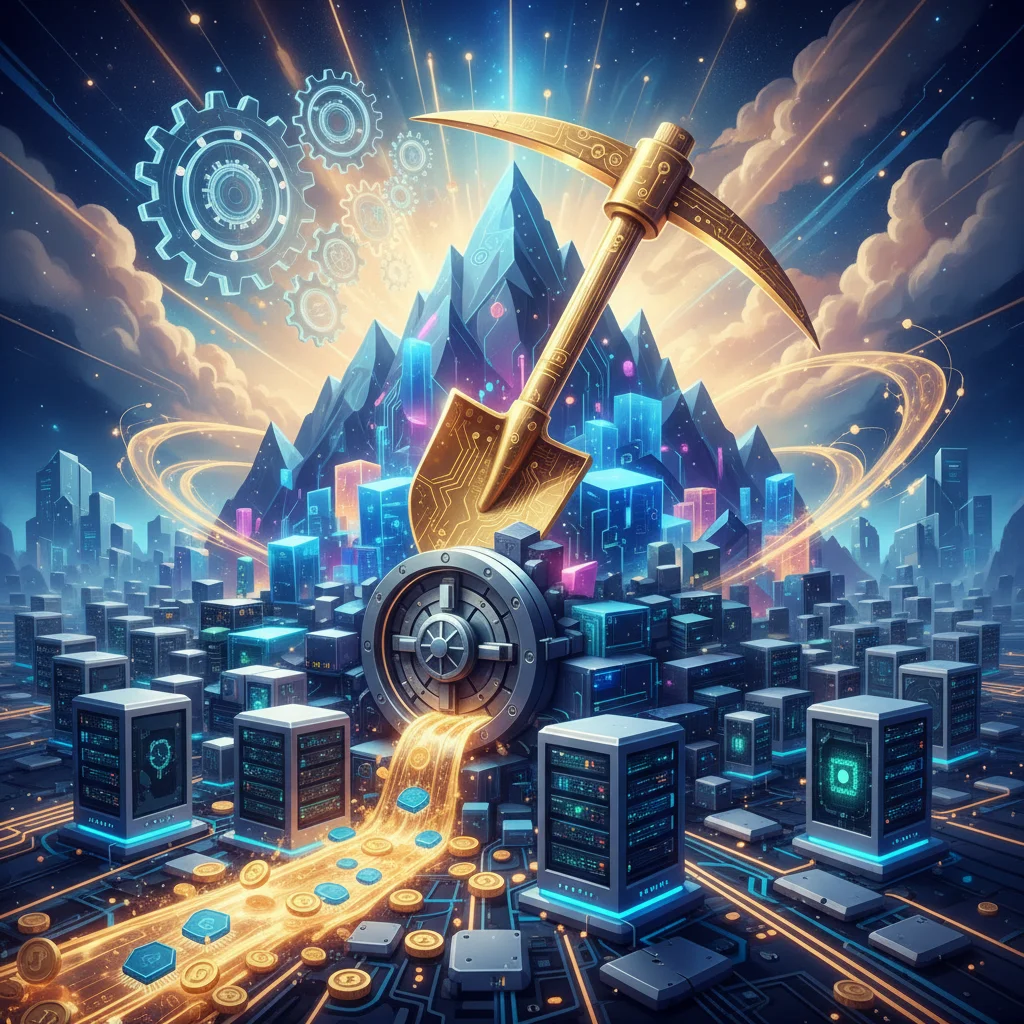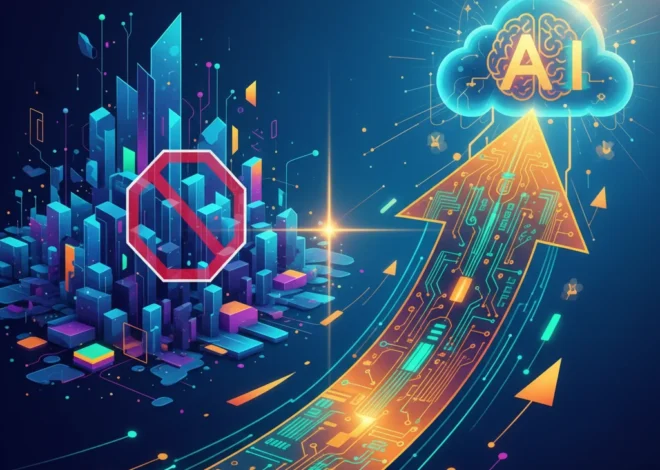
The AI Gold Rush: How One Company’s Record Profits Reveal the True Foundation of the Tech Revolution
The Silent Engine Roaring Behind the AI Boom
In the world of technology, all eyes are on the dazzling applications of artificial intelligence. We’re captivated by chatbots that write poetry, image generators that create surreal art, and the promise of automation that will redefine industries. But behind this vibrant curtain of software and algorithms, a quieter, more fundamental revolution is taking place—a revolution forged in silicon. And at its epicenter stands one company: Taiwan Semiconductor Manufacturing Company, or TSMC.
Recently, the world’s most crucial chip manufacturer announced record-breaking profits, a direct consequence of the insatiable global demand for AI-powering hardware. This isn’t just a story about a successful company; it’s a powerful signal about where the real value in the tech ecosystem is being created. It tells us that while AI might be the gold, TSMC is selling the picks and shovels to every miner on the planet. For developers, entrepreneurs, and tech leaders, understanding this foundational layer is no longer optional—it’s critical to navigating the future.
What is TSMC, and Why Does It Hold the Keys to the AI Kingdom?
To grasp TSMC’s significance, you need to understand the modern semiconductor industry. Decades ago, companies like Intel designed and manufactured their own chips. They were “Integrated Device Manufacturers” (IDMs). But a new, more specialized model emerged: the “fabless-foundry” system.
- Fabless Companies: These are the brilliant designers. Think Nvidia, Apple, AMD, and Qualcomm. They conceptualize the world’s most advanced chips but don’t own the multi-billion dollar factories (or “fabs”) needed to make them.
- Foundries: This is where TSMC reigns supreme. They are a pure-play foundry, meaning they don’t design their own branded chips. Instead, they focus on one thing: perfecting the art and science of manufacturing chips for everyone else.
This specialization has allowed TSMC to pull far ahead of the competition in the race to shrink transistors—the fundamental building blocks of a chip. They are the masters of the most advanced “process nodes” (like 5-nanometer and 3-nanometer). For artificial intelligence and machine learning, this is everything. Smaller transistors mean you can pack more of them onto a single chip, leading to exponential gains in processing power and energy efficiency—exactly what’s needed to train and run massive AI models.
Simply put, without TSMC’s manufacturing prowess, the powerful GPUs from Nvidia that train models like GPT-4, or the custom silicon in your smartphone, wouldn’t exist in their current form. They are the indispensable, high-tech landlord for the entire digital world.
AstraZeneca's 5M AI Gamble: Is the Future of Medicine Written in Code?
Decoding the Numbers: A Barometer for the AI Economy
TSMC’s latest financial results are more than just impressive figures on a balance sheet; they are a direct reflection of the massive capital investments being poured into AI infrastructure. When a cloud giant like Amazon, Microsoft, or Google builds a new AI data center, they are ordering tens of thousands of chips that, almost invariably, were born in a TSMC fab.
Let’s look at what the recent earnings report signals, based on the trends highlighted by market analysts following the announcement.
| Metric | Reported Figure (Illustrative) | What It Really Means |
|---|---|---|
| Quarterly Net Profit | Surged to over NT$238 billion (source) | Demand for high-margin, advanced AI chips is offsetting slowdowns in other sectors like smartphones and consumer PCs. AI is the primary growth engine. |
| Revenue from High-Performance Computing (HPC) | Represents over 40% of total revenue | “HPC” is the category that includes AI accelerators and server CPUs. This shows a strategic shift where AI infrastructure is now the core business driver. |
| Advanced Node Revenue (7nm and below) | Accounts for more than 50% of wafer revenue (source) | The most expensive and complex manufacturing processes are the most in-demand, confirming that customers are prioritizing performance for AI above all else. |
| Capital Expenditure Forecast | Remains incredibly high (tens of billions USD) | TSMC is betting that the AI boom isn’t a fad. They are investing heavily to build more advanced fabs to meet projected future demand. |
This data confirms that the AI revolution is not just a software or SaaS phenomenon. It is a full-stack revolution, and the capital is flowing all the way down to the silicon. For startups, this means the cost of compute will remain a significant factor, while for developers, the underlying hardware architecture is becoming increasingly important for performance optimization.
The Ripple Effect: What TSMC’s Dominance Means for You
The shockwaves from TSMC’s fabs in Taiwan are felt across the entire tech landscape. This isn’t some abstract corporate story; it has tangible implications for almost everyone in the industry.
For Developers and Tech Professionals
The hardware is no longer an abstraction. The specific capabilities of a new Nvidia GPU or a Google TPU—all manufactured by TSMC—directly influence what’s possible in machine learning. Your programming is increasingly tied to a hardware stack. Expertise in CUDA (for Nvidia GPUs) or optimizing code for specific AI accelerators is becoming a highly valuable skill. The performance of the cloud instances you rent is a direct result of the chips inside them, and understanding that hardware can be a key differentiator.
For Entrepreneurs and Startups
Access to cutting-edge compute is both a barrier and an opportunity. The high cost of training large models on chips made by TSMC has led to an innovation boom in model optimization, transfer learning, and the rise of smaller, more efficient models. For startups, competing on raw model size is a losing game against the tech giants. Instead, the opportunity lies in building clever SaaS applications, developing novel algorithms that require less power, or creating tools that improve developer productivity in this new AI-centric world. The supply bottleneck for the latest GPUs is a real business constraint you must plan around.
All In: Why the U.S. Economy is Making a Trillion-Dollar Bet on AI
For the Cybersecurity Industry
The same powerful chips that enable AI-driven threat detection can be used to create more sophisticated cyberattacks. AI can power faster brute-force attacks, create more convincing phishing emails, and identify software vulnerabilities at an unprecedented scale. Furthermore, the semiconductor supply chain itself is a major cybersecurity target. A compromised chip design or a disruption at a fab could have catastrophic global consequences, making hardware security more critical than ever.
The Road Ahead: Innovation Beyond Moore’s Law
TSMC’s success story is happening against a backdrop of immense physical challenges. Moore’s Law—the observation that the number of transistors on a chip doubles roughly every two years—is slowing down. We are approaching the physical limits of how small we can make transistors. The future of performance gains won’t just come from shrinking them further but from clever innovation in how we package them.
Technologies like “chiplets” (stitching together smaller, specialized chips into one larger processor) and advanced 3D packaging are the new frontiers. This is where TSMC continues to invest heavily, ensuring that even when we can’t make transistors much smaller, we can connect them more efficiently. This continued push is essential, as the demands of next-generation AI models are only going to grow.
The race is on. Competitors like Samsung and a resurgent Intel (with its own foundry ambitions) are working furiously to catch up. But for now, the entire AI ecosystem is building its future on a foundation poured by TSMC.
Teenage Hackers vs. The Hospital: Why the Kido Arrests Are a Critical Cybersecurity Wake-Up Call
Conclusion: The Bedrock of Our Digital Future
The record profits of a semiconductor foundry might not seem as exciting as the launch of a new AI model, but they are profoundly more consequential. They reveal the true, capital-intensive bedrock upon which our digital world is being built. The AI boom is not ethereal; it is physical. It is composed of silicon wafers, complex lithography, and a global supply chain of incredible precision.
TSMC’s success is a proxy for the health and trajectory of the entire artificial intelligence revolution. It reminds us that every line of software code, every SaaS platform, and every piece of automated intelligence ultimately runs on a physical piece of hardware. And for the foreseeable future, the world’s most advanced hardware runs through Taiwan.


